Nate's reviews and writings
Half-Life 2
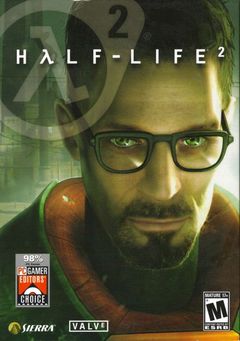 It's hard to find a gamer who doesn't have some experience with the Half-Life franchise. A champion of PC software when things started shifting heavily in the favor of consoles, the original Half-Life wowed critics with its pulse-pounding scripted sequences and seamless stitching of narrative and gameplay in first-person. The long-awaited full sequel, Half-Life 2, received just as many accolades, if not more, for its advances in artificial intelligence, character animation, and especially the robust physics engine powering the game's many objects.
It's hard to find a gamer who doesn't have some experience with the Half-Life franchise. A champion of PC software when things started shifting heavily in the favor of consoles, the original Half-Life wowed critics with its pulse-pounding scripted sequences and seamless stitching of narrative and gameplay in first-person. The long-awaited full sequel, Half-Life 2, received just as many accolades, if not more, for its advances in artificial intelligence, character animation, and especially the robust physics engine powering the game's many objects.
And yet, it was only two weeks ago that I first experienced a game in Valve's flagship franchise myself. I've never been much of a PC gamer: I can count the number of games I've played on a computer monitor on one hand, and four of them begin with the words "Star Wars." I've had many consoles in my life, but rarely a PC with the power to play current games. I'm actually typing this on a Macbook right now, and as we all know, Macs just aren't for gamers.
That said, Valve has made an effort to bite into the Apple market with Mac versions of Steam and many of its own big games offered therein, just in time for the annual 4th of July sales on the incredible digital distribution service. And if Valve is willing to create a Mac version of Half-Life 2 and price it at an outrageously fair $3.39 just for me, then I guess I owe it to them to try the game that millions have gone headcrab-crazy for.But for all its fame and glory, the bottom line is that Half-Life 2 is a six-year-old PC game in a genre I'm not terribly enthralled by. Did I hate it? Hit the jump, smash that caps lock key and ready your profane comments, PC fanboys, because I'm about to tear into your beloved Half-Life 2 like a shotgun into an antlion.
Heavenly Sword
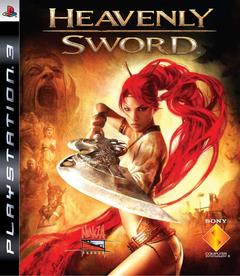 The Playstation 3 was a tough sell for Sony back in 2006. Nevermind
the console's infamous $599.99 US price tag; it simply didn't have any
must-have games in its launch window. Much like the PS2, the system's
first year was mostly without a killer app. Even worse, adoption of the
Blu-Ray format wasn't nearly as fevered as the PS2's
prominently-featured DVD drive. It was once said that the best-selling
game in the PS2's first year was The Matrix on DVD: people ignored the
lack of games, they just wanted a DVD player, and PS2 provided a cheap
solution, which the $600 PS3 was anything but.
The Playstation 3 was a tough sell for Sony back in 2006. Nevermind
the console's infamous $599.99 US price tag; it simply didn't have any
must-have games in its launch window. Much like the PS2, the system's
first year was mostly without a killer app. Even worse, adoption of the
Blu-Ray format wasn't nearly as fevered as the PS2's
prominently-featured DVD drive. It was once said that the best-selling
game in the PS2's first year was The Matrix on DVD: people ignored the
lack of games, they just wanted a DVD player, and PS2 provided a cheap
solution, which the $600 PS3 was anything but.Perhaps Sony's first true hope for a must-have game, Heavenly Sword was released in November 2007, a full year after the system launched. The game was marketed heavily, taking top slots in Sony's E3 presentations and making appearances on television months before it was to launch. When Heavenly Sword finally descended onto store shelves, reviews averaged out to a positive mark, though the range of praise spanned from "Perfection" to "disappointment."
As a bit of a 3D action game buff, I've always had my eye on Heavenly Sword, but I'm only just now playing it for the first time. I've got specific tastes in the genre: even God of War managed to disappoint me on some levels. Let's see if Heavenly Sword cuts it.
Mario Strikers Charged
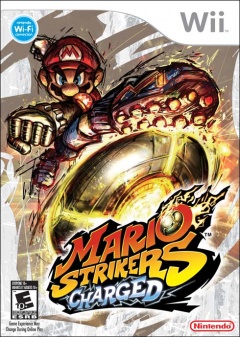 Professional athletes who excel at multiple sports are understandably
rare. The ideal body proportions of an offensive lineman and a power
forward are basically inverse. The abilities and skills required by a
closing pitcher and a starting goaltender are worlds apart. And who
could possibly have enough time to devote their training and competitive
passion to two separate sports seasons that last six months or more
each year? Ask a sports buff if any athletes have made an impact on two
different sports, and they'll probably answer with Bo Jackson, Deion
Sanders, and possibly Michael Jordan with a sneer.
Professional athletes who excel at multiple sports are understandably
rare. The ideal body proportions of an offensive lineman and a power
forward are basically inverse. The abilities and skills required by a
closing pitcher and a starting goaltender are worlds apart. And who
could possibly have enough time to devote their training and competitive
passion to two separate sports seasons that last six months or more
each year? Ask a sports buff if any athletes have made an impact on two
different sports, and they'll probably answer with Bo Jackson, Deion
Sanders, and possibly Michael Jordan with a sneer.
Ask a gamer, however, and the only answer will be Mario. Ever since the platforming plumber took up golf in 1991's NES Open Tournament Golf, Mario's been blazing a trail across athletic endeavors that none could possibly match, serving up scorchers with his tennis racket in one hand and palming a basketball in the other. The Italian even competes under his own personal flag in both the Summer and the Winter Olympic Games. And next year, Mario will be adding Dodgeball to his list with the launch of Mario Sports Mix, which will also feature the gaming icon's return to Volleyball, Hockey, and Basketball. Even with his talents spread so thin, critics have mostly praised Mario's spinoff sports titles for their sufficient gameplay and charming Mushroom Kingdom aesthetic.Somebody forgot to tell Next Level Games about that Mushroom Kingdom charm, however, as the Canadian developer decided to go a drastically different route for their take on Mario playing Soccer, Mario Strikers Charged. Sure, Mario and his assortment of friends with mustaches and crowns all show up, as do the requisite mushrooms, shells, and stars, but something seems to have deeply upset the usually benevolent bunch: smiles turn to scowls, frilly dresses are traded for form-fitting battle armor, and the good-natured teasing is replaced with some outright lewd gestures. The tone may have taken a turn for the drab, but there is still plenty of fun to be had with this bizarre Mario Sports title.
God of War III
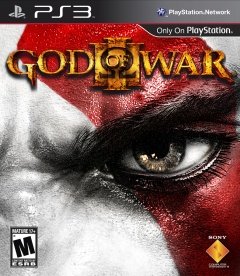 History lesson #1: the ancient Greeks were crazy. Sure, they essentially laid the foundation for western society, but they also worshipped more gods than anybody could possibly remember, all of whom led lives with more dramatic twists and turns than a daytime soap opera. I doubt Days of Our Lives ever featured a giant man made of rock who married his sister and ate his kids, after all.
History lesson #1: the ancient Greeks were crazy. Sure, they essentially laid the foundation for western society, but they also worshipped more gods than anybody could possibly remember, all of whom led lives with more dramatic twists and turns than a daytime soap opera. I doubt Days of Our Lives ever featured a giant man made of rock who married his sister and ate his kids, after all.
History lesson #2: in 2005, God of War tore its way into the still-beating hearts of PS2 owners with its brutal take on Greek mythology. The game introduced us to Kratos, Spartan servant of the gods and the kind of pitiless killer that most actual Spartans probably strived to be. God of War sold bajillions of copies, spawned equally-successful sequels on the PS2, PSP, and PS3, and even had its own terrible SpikeTV special for rabid fans to embarass themselves in front of the world. Not bad for fanfiction, is it?
History lesson #3: the action-packed start to God of War II is actually responsible for the creation of The First Hour. The game certainly started with a bang, thrusting the player into an intense situation right off the bat that dropped jaws to the floor. Does God of War III have the same inspirational power?E3 2010 Predictions Results
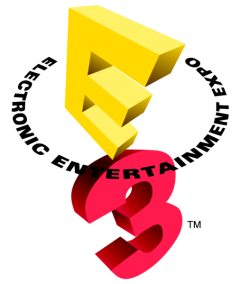 Like scampering down the stairs on Christmas morning, the excited search for a steady video feed before E3 conferences is filled with anticipation. The annual summer happening is one of the few times on the gaming industry's calendar when we can look forward to some surprise delights from the many publishers playing the role of Santa Claus in business suits. Simply put, it's the industry's biggest event in the year.
Like scampering down the stairs on Christmas morning, the excited search for a steady video feed before E3 conferences is filled with anticipation. The annual summer happening is one of the few times on the gaming industry's calendar when we can look forward to some surprise delights from the many publishers playing the role of Santa Claus in business suits. Simply put, it's the industry's biggest event in the year.As such, the editors of The First Hour tried to guess what unexpected pleasures would manifest at the event. Some were sure bets, like Microsoft showing off Halo: Reach. Others were more risky, like F-Zero hitting the 3DS at launch. And some were planted firmly outside the realm of possibility, with Shenmue 3 topping that list as always.
When all was said and done, The First Hour hit a few out of the park...but mostly struck out.
A Tale of Two Days - E3 2010 Press Conference Recap
 The question at the beginning of E3 always seems to be, "Who's going to
win this year?" The gaming community eagerly watches the big press
conferences for showstopping announcements and game demonstrations,
looking to see which company will have the edge for the next twelve
months. E3 2010 featured five big press conferences in its first two
days: Microsoft, EA, and Ubisoft on Monday, and Nintendo and Sony on
Tuesday. So much has happened in the past 48 hours that I think it's
important to take a moment and recap each company's showing. I've
definitely missed a few announcements and details in this
quick-and-dirty summary, but I think I hit all the major points.
The question at the beginning of E3 always seems to be, "Who's going to
win this year?" The gaming community eagerly watches the big press
conferences for showstopping announcements and game demonstrations,
looking to see which company will have the edge for the next twelve
months. E3 2010 featured five big press conferences in its first two
days: Microsoft, EA, and Ubisoft on Monday, and Nintendo and Sony on
Tuesday. So much has happened in the past 48 hours that I think it's
important to take a moment and recap each company's showing. I've
definitely missed a few announcements and details in this
quick-and-dirty summary, but I think I hit all the major points.Memorable Ideas from Forgettable Games - The Poker Race
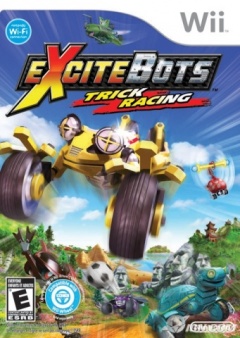 Some games are unforgettable. After forking over our birthday money at
K-Mart, we bounce all the way home in the backseat of the station wagon,
wrestle the plastic wrap away from the box, gingerly place the game in
the system, and steady our feverishly shaking hands with an anaconda
grip on the controller. We don't let go for hours. And when the credits
roll, we tear up a little, knowing we'll always cherish that first time
through.
Some games are unforgettable. After forking over our birthday money at
K-Mart, we bounce all the way home in the backseat of the station wagon,
wrestle the plastic wrap away from the box, gingerly place the game in
the system, and steady our feverishly shaking hands with an anaconda
grip on the controller. We don't let go for hours. And when the credits
roll, we tear up a little, knowing we'll always cherish that first time
through.And then there are games that are largely forgotten weeks after release. Niche appeal, scathing reviews, or even just lack of hype can doom a game to obscurity and the Target bargain bin. But even these games deserve a second look...sometimes. Every once in a while, a kernel of brilliance can be found within these steaming piles of mediocrity. The purpose of this feature is to sift out some of these conceptual gems and put them under the microscope.
Today we'll deal out the Poker Races from ExciteBots: Trick Racing, and see how easy it can be to add layers of strategy to a game by simply cramming another game into it.
The QTE cure: Singin' in the Heavy Rain
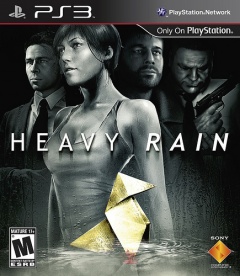 Quick Time Events. Ever since God of War and Resident Evil 4 exploded
onto the scene with button-prompt sequences of gore and horror, the
industry has shown its sheep-like nature and incorporated these Gotcha!
moments into games without thinking about how they make an
interactive experience better. Many gamers have adjusted to the fact
that every cutscene now has an awful series of play buttons throughout, but I
personally would like to cram all the QTEs in the world into a space
shuttle full of cobras and launch them directly into the sun if it meant
I'd never have to see another one again.
Quick Time Events. Ever since God of War and Resident Evil 4 exploded
onto the scene with button-prompt sequences of gore and horror, the
industry has shown its sheep-like nature and incorporated these Gotcha!
moments into games without thinking about how they make an
interactive experience better. Many gamers have adjusted to the fact
that every cutscene now has an awful series of play buttons throughout, but I
personally would like to cram all the QTEs in the world into a space
shuttle full of cobras and launch them directly into the sun if it meant
I'd never have to see another one again.
That said, it's not impossible to come across decent use of QTEs. Indeed, before Resident Evil 4 set the standard at the advent of 2005, the mechanic was most prominently-used by the Dreamcast's crown jewel, Shenmue. In fact, it was Yu Suzuki, that game's director, who coined the term "Quick Time Event." Suzuki put the gimmick to good use throughout Shenmue, allowing protagonist Ryo Hazuki to do everything from tossing drunkards around in bar brawls to saving little girls from incoming soccer balls. One of the reasons the game is so beloved today is that it allowed the player to engage in such a wide variety of scenarios, many of which were supported with smartly-designed QTEs.Good QTEs didn't end with Shenmue, however, even though sometimes it seems that's the case. Like God of War, other Playstation heavyweights have managed to use QTEs to enhance a game experience. I think it's only fair that we look at a few of those, as well as some alternatives to these timed button-prompts for cinematic flair in games.
The QTE plague: What hath God of War wrought?
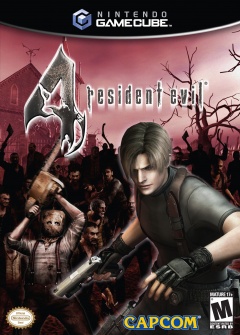 Quick Time Events. So many games have used them to some extent in the
last five years that just about every gamer has an opinion on them.
Mine is that they are the worst gameplay gimmick to take the industry by
storm in a long time, and I wouldn't mind seeing them all packed into a
burlap sack filled with leeches and thrown into the depths of a
volcano. They're tacky, they're unintuitive, and their attempts to
engage players in cinematic animations backfire and break the sense of
immersion one has with a game. And unfortunately for me, they're just
about everywhere these days.
Quick Time Events. So many games have used them to some extent in the
last five years that just about every gamer has an opinion on them.
Mine is that they are the worst gameplay gimmick to take the industry by
storm in a long time, and I wouldn't mind seeing them all packed into a
burlap sack filled with leeches and thrown into the depths of a
volcano. They're tacky, they're unintuitive, and their attempts to
engage players in cinematic animations backfire and break the sense of
immersion one has with a game. And unfortunately for me, they're just
about everywhere these days.Two behemoths let loose in early 2005 can be thanked -- or blamed -- for the salvo of games that have featured QTEs in the last five years. The first, with a January 11 release date, was Resident Evil 4. The game was extremely well-received: it won many Game of the Year awards, offered a fresh take on the aging Resident Evil formula, and gave Gamecube owners a third-party exclusive worth bragging about. The other member of the gruesome twosome that brought us into the era of QTEs is known as God of War. Released just two months after Resident Evil 4, the game received just as many accolades and turned heads back to the PS2 as quickly as they'd been lost to the Gamecube's horror hit. Is it any wonder that the industry went in the direction it did when two such monumental successes as these both prominently featured a relatively unused gameplay gimmick?
Today we'll take a look at how the smart use of QTEs helped put these two games on the map, and watch a few examples of QTEs gone wrong. And trust me, there was a huge pool of resources for the latter.
Super Mario Galaxy 2
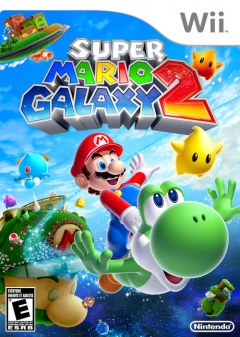 For all its talk of innovation this generation, Nintendo seems to be
falling back on its old tricks like never before. Alongside its Wii
Sports Resort and Wii Fit Plus, Nintendo announced two games at E3 2009
that surprised the videogame community: New Super Mario Bros Wii and
Super Mario Galaxy 2.
For all its talk of innovation this generation, Nintendo seems to be
falling back on its old tricks like never before. Alongside its Wii
Sports Resort and Wii Fit Plus, Nintendo announced two games at E3 2009
that surprised the videogame community: New Super Mario Bros Wii and
Super Mario Galaxy 2.
What's that I hear you say? "Big deal! How are new Mario games a surprise?" Well, New Super Mario Bros. Wii is the first 2D Mario game to hit a console since Super Mario World, just under nineteen years ago. And Super Mario Galaxy 2 is the first direct sequel to a Mario game since Super Mario Bros. 3, just over twenty years ago. Nintendo may be feeding casual gamers with one hand, but it's got plenty of snacks for Mario lovers in the other.New Super Mario Bros. Wii was set loose upon the world last November, and continues to sell like Wii-branded hotcakes well into this year. But Nintendo held Super Mario Galaxy 2 off until this summer, ensuring that they have a full three years to create bold new worlds for Mario to explore. Is the Galaxy worth revisiting, or was one trip to the cosmos enough?
